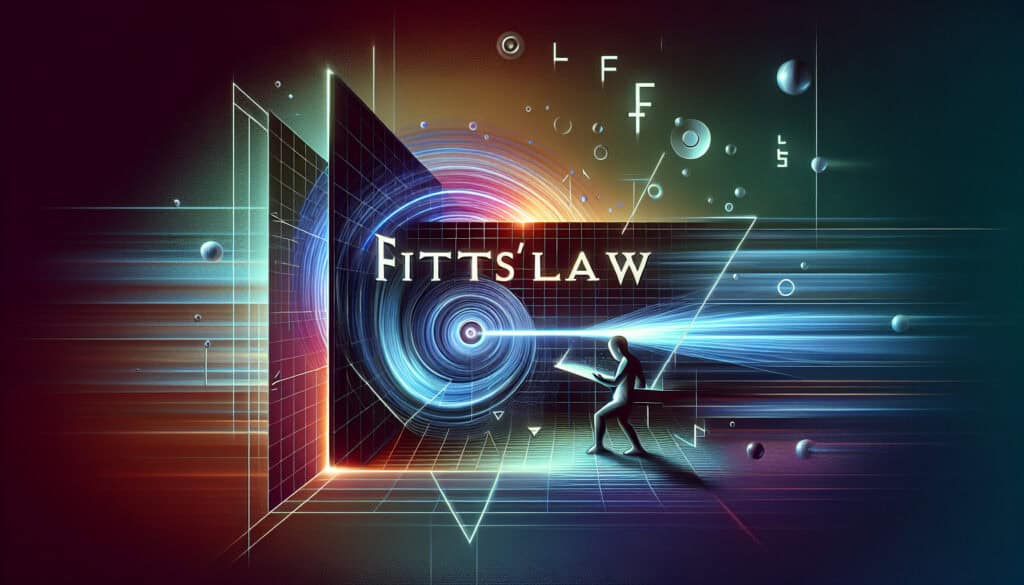To predict the time it takes to move to a target area.
- 方法: 工程, 人体工程学
Fitts’ Law

Fitts’ Law
- 设计原则, 人体工程学, 人为因素, 人机交互, 交互设计, 可用性, 用户体验(UX), 用户界面(UI)
目标
如何使用
- A model of human movement that predicts the time required to rapidly move to a target area is a function of the ratio between the distance to the target and the width of thetarget. It is widely used in user interface (UI) design to optimize the placement and size of interactive elements.
优点
- Provides a scientific basis for 用户界面设计 decisions; Helps to improve the usability of interfaces.
缺点
- Does not account for all factors that affect user interaction; Can be difficult to apply in complex interfaces.
类别
- 人体工程学, 产品设计
最适合:
- Designing user interfaces with large, easy-to-click buttons and other interactive elements.
Fitts’ Law plays a significant role in various industries beyond just user interface design, including gaming, mobile app development, and automotive dashboard design, where quick and precise interaction is crucial. In these contexts, engineers and designers employ the principles of Fitts’ Law during the prototyping and testing phases of a project. By assessing how users interact with different target sizes and distances, design teams can accurately determine the optimal dimensions for buttons, sliders, and navigational controls that enhance user experience. For instance, in gaming, positioning action buttons within easy reach of the thumb can lead to a more fluid gameplay experience, while in automotive design, ensuring that dashboard controls are easily accessible without distracting the driver is vital for safety. Typically, usability researchers or product designers initiate studies based on Fitts’ Law during user testing sessions, allowing them to gather quantitative data on movement times. This data enables design teams to understand user behavior better and refine their products to meet specific ergonomic criteria, leading to interfaces that not only perform well but also resonate with users’ physical capabilities and expectations, thereby facilitating greater adoption and satisfaction.
该方法的关键步骤
- Identify target interactive elements on the interface.
- Determine the distance from the user's start position to the target.
- Measure the width of the target area (interactive element).
- Calculate the Index of Difficulty (ID) using the formula ID = log2(2D/W), where D is distance and W is width.
- Estimate the movement time using Fitts' Law formula: MT = a + b * ID, where MT is movement time, and a and b are empirical constants.
- Adjust the size and placement of the interactive elements based on the calculated movement time and index of difficulty.
- Iterate the design by testing different configurations to optimize user performance.
专业提示
- Conduct user testing to refine the size and placement of interactive elements, following iterative design principles grounded in Fitts' Law.
- Analyze the spatial layout of UI components; grouping frequently used items can reduce the distance to targets, enhancing efficiency.
- Implement hover states and touch feedback that provide users with a sense of target engagement, ensuring more precise interactions as suggested by Fitts' Law.
历史背景
1986
(如果日期不详或不相关,例如 "流体力学",则对其显著出现的时间作了四舍五入的估计)。

相关文章
肌肉骨骼不适调查表
多变量测试(MVT)
多元回归分析
动作捕捉系统
MoSCoW 方法
情绪中值测试